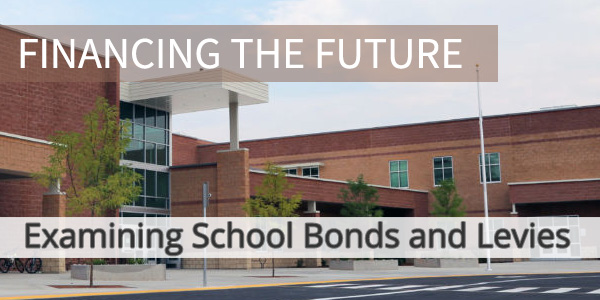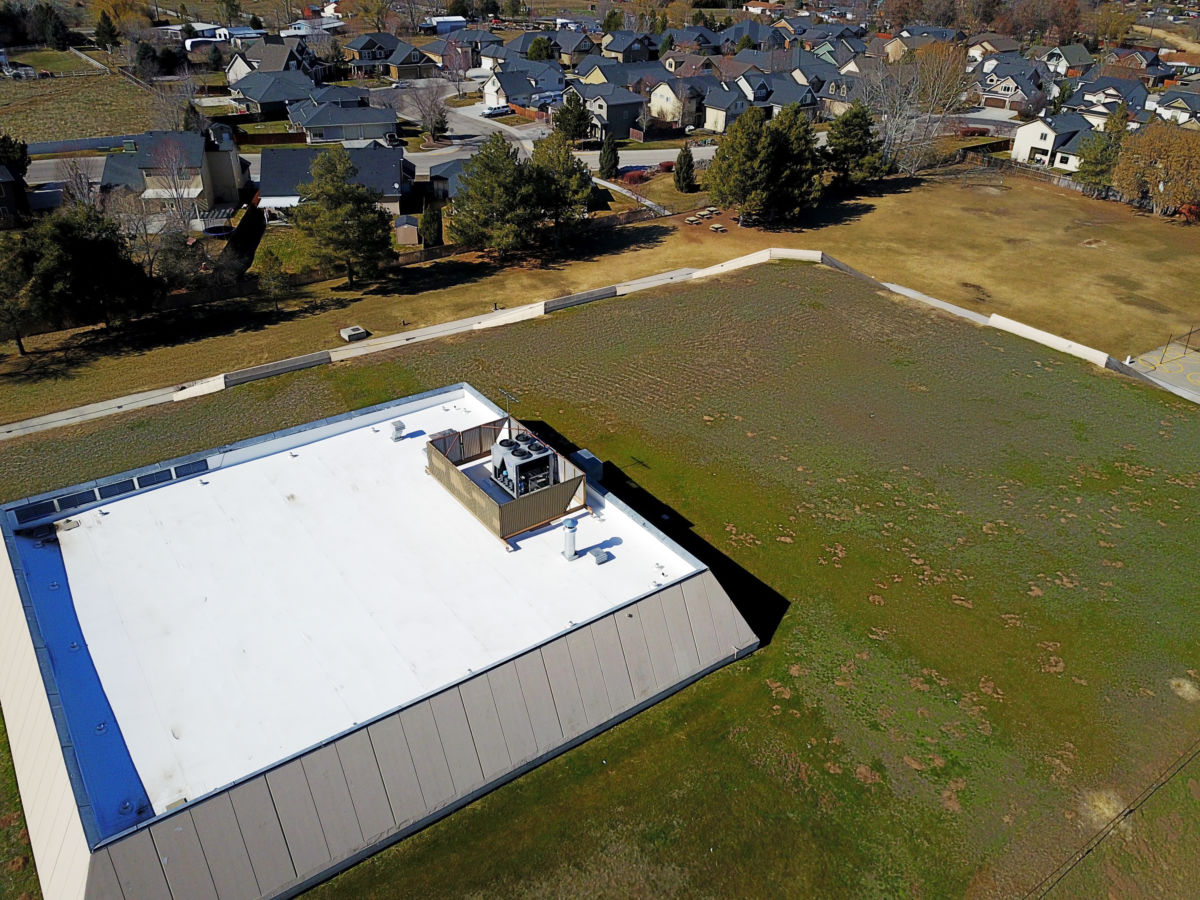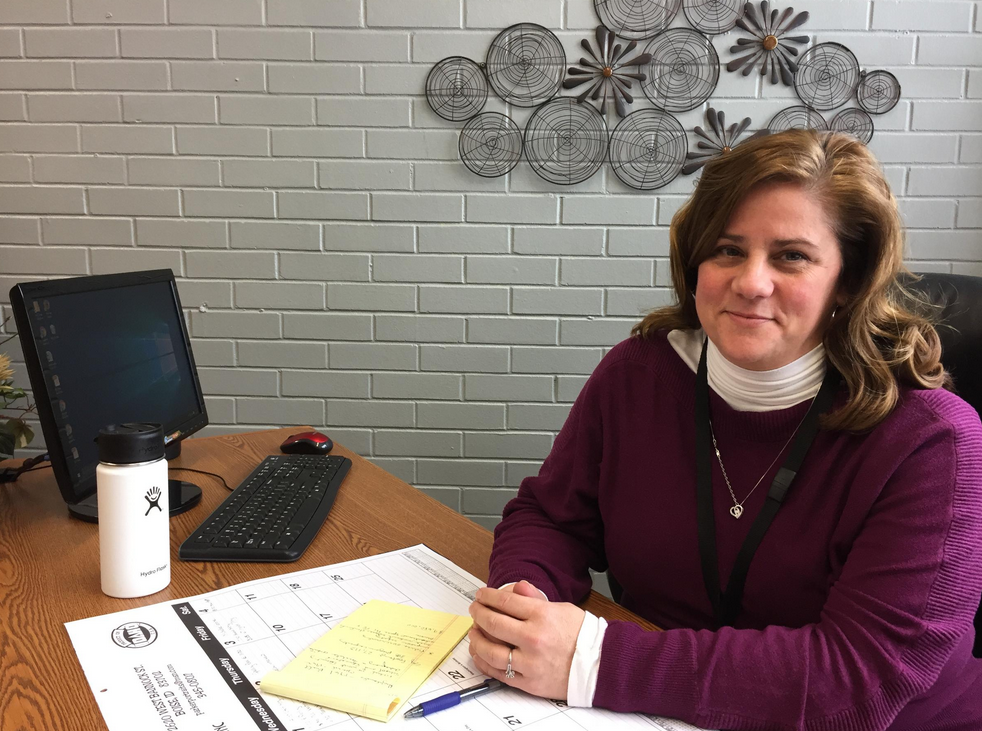The front door of Amity Elementary in south Boise doesn’t sound too good. It bellows and creeks while swinging open. Once inside, there’s no front office immediately visible; in fact, there’s no reception whatsoever. Entering the school at midday, the sight – and sounds – of hungry kids plowing through their lunches is the only greeting.

Constructed in 1978, Amity was something of an architectural wonder in its day.
“The school’s really a big circle,” says Robin Rausch. She’s an educator at a local college and the parent of a third grader at Amity. “In the interior of the circle we’ve got the library and offices and bathrooms. And then the outer perimeter is filled with classrooms.”
Amity’s classrooms are bundled in clusters and feature retractable walls. The ability for teachers to share space and offer kids seamless movement between classes or subjects was on the cutting edge of education theory – circa 1980.
There’s also another striking aspect of the school’s design. Rausch points to the school’s fairly thematic mascot. “We’re called the groundhogs,” she announces, pointing to a friendly rendering of the critter in a hallway. “I don’t know if you observed when you came in to the school, but we are buried under a mound of dirt. Above ground school, but covered with dirt.”
Amity Elementary was featured in the Time Magazine issued on December 24, 1979.
Revolutionary for its time, the building’s earthen roof was touted as being environmentally friendly, good insulation, and was featured in TIME magazine.
While the eco-friendly roof was an early attempt at a sustainable building, it presents many difficulties. Probably the least serious but most noticeable is revealed in the school’s library.
“It’s dark in here,” says Amity Principal Valerie Uhlorn. “It’s very cave-like, if you will. There are not a lot of windows. If you want to look outside the building and see what’s happening, you’re going to have to go into a classroom and look out a window.”

She says a definite downside of the school is a lack of Vitamin D.
Sure, natural light may be in short supply, but shadows in the library aren’t grounds to demolish a building providing classes to some 600 students.
Standing on that more than 30-year-old cutting-edge earthen roof, Uhlorn categorizes the space as, “probably my least favorite location in the building – part of the building.”
According to Uhlorn, whenever storms come, be it rain or snow, the sod-covered structure leaks like a sieve.
“It instantly leaks around the entire building,” she says. “We have buckets that are actually inside of our ceilings to catch the moisture as it falls.”
During a winter storm, she said a janitor spent the night in the building monitoring and emptying all of the buckets collecting drips.
On top of the leaks, which Uhlorn says were an issue at the school from day one, there are the outdated wedge-shaped classrooms and an HVAC system that’s always noticeably droning. To Uhlorn, the building’s once groundbreaking design is more liability than asset.
“Unfortunately,” she says, “as time has gone on, we’ve learned that the architectural structure of this building is not sufficient for what we’re trying to convey in this community.”
Should the school bond pass, Amity would get $13.8 million to tear down the sod roof structure and start over on the 15-acre site. Amity isn’t the only tear down; six schools in total would be completely rebuilt should the bond pass.
Across town, another school slated for a wrecking ball and rebuild job is Highlands Elementary. Built in 1962, the brick school is a product of the mid-century with a flat roof, lots of windows and some fantastic multi-colored floor tiles.
Highlands Principal Kristen Duskey watches as students file from the main building to portable classrooms. Rain or shine, hot or cold, the children have to go outside several times a day to reach their classes.
“I think we make sure we take every precaution,” Duskey says of the procedure to shepherd students from building to building. “Head counts are done before they ever come back into the building.”
As she watches the transition, Duskey notes that supervising teachers are keeping their eyes on the kids at all times.
Space is the biggest problem at Highlands – namely, there’s not enough of it. Portable classrooms aren’t just an issue at Highlands; they’re used at 12 of the Boise district’s 32 elementary school.

Back inside the retro brick school building, walking down the hall, Duskey points out one of Highlands most charming features – and what it reveals.
“We have these fabulous windows from the hallway into the tops of the classrooms, but you’ll notice we don’t have storage space,” she says.
Visible through the airy windows are boxes. Boxes filled with classroom materials. Boxes filled with art supplies. Boxes filled with all the things that brighten a room used to teach small kids in. Duskey says the limited closet space in each classroom is loaded up with students’ items like coats and backpacks. She concedes it doesn’t look great, but Highlands is nothing if not creative with its space.
Hallways at the school serve a variety of purposes. In one, big musical instrument cases – think bass-sized – line the right side of the hall. On the left, countertops and cabinets serve as an art class prep area. And the special multitasking doesn’t end there.
The school’s performance area serves triple duty and is referred to as the caf-a-gym-a-torium. While the retro building is abundant with period detail and charm like the fun floor tiles, it’s clear Highlands has outgrown its space.
While Highland’s building is rife with character, Duskey doesn’t worry about losing anything should the 1960s structure meet the wrecking ball.
“The culture and the climate, the traditions that have been built at Highlands – way back when – those go with us,” Duskey says. “That’s what I’ve been talking to the kids and the staff about. It’s still Highlands. I think that’s important to remember. We’re still Highlands.”
Joining Highlands and Amity on the list for a total rebuild are Pierce Park, Mountain View, Valley View and Whittier Elementary. Just shy of $72 million of the $172 million bond is slated to go toward the demolition and construction of the six schools.
Click here for the audio version of this story.
Idaho Education News and Boise State Public Radio are partnering to produce a week-long series about how the statewide elections will affect students, communities and taxpayers.
Here are links to the entire series:
- Across Idaho, a $714 million election day looms
- The legacy of bonds in Boise
- A look at two Boise elementary schools embracing the wrecking ball
- The bond issue ‘supermajority:’ a debate as old as Idaho
- What it takes to pass a school bond and what it could mean to your taxes
- How a Boise career-technical school prepares students for jobs in high demand
- Listen: A conversation on school bonds with Stan Olson
Upcoming events
Thursday, March 9
Forum: Education and Elections: a K-12 Roundtable — 11:45 a.m -1:15pm, The Grove Hotel, Ballroom 2nd Floor. The City Club of Boise event will feature Boise district Superintendent Don Coberly, West Ada Superintendent Mary Ann Ranells and Kuna Superintendent Wendy Johnson.
Friday, March 10
Forum: Donuts and Democracy: A discussion on education policy and funding. Panelists will be Don Coberly, superintendent of the Boise school District, Karen Echeverria, executive director of the Idaho School Boards Association, Sen. Janie Ward-Engelking, D-Boise, and Clark Corbin, reporter for IdahoEdNews.org. IdahoEdNews.org senior reporter Kevin Richert will moderate. The event is free and open to the public from 9 to 10 a.m. at the Yanke Research Center, 220 ParkCenter Blvd. The event will be broadcast live on EdNews’ Facebook page. And yes, there will be free donuts and coffee.
